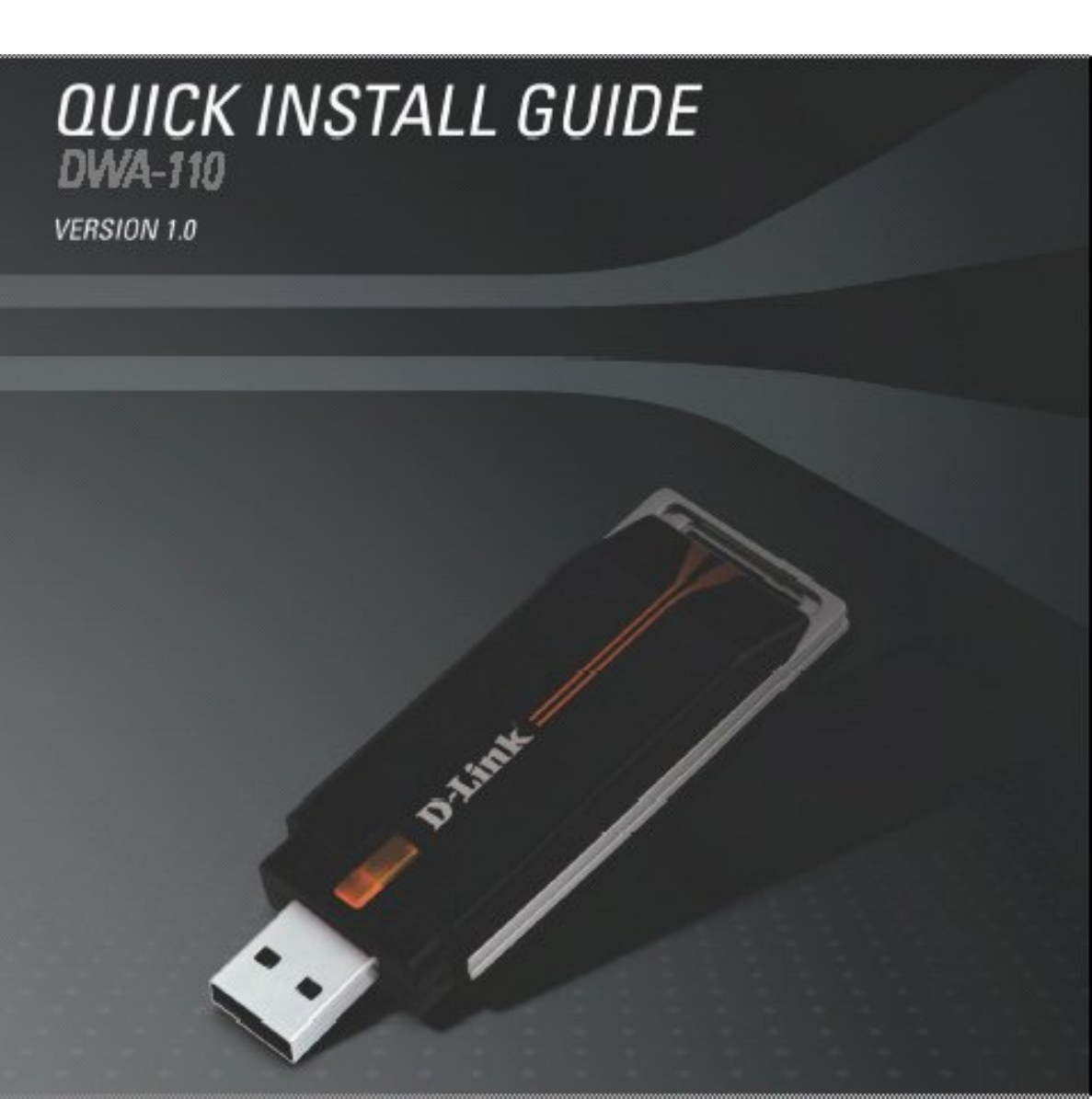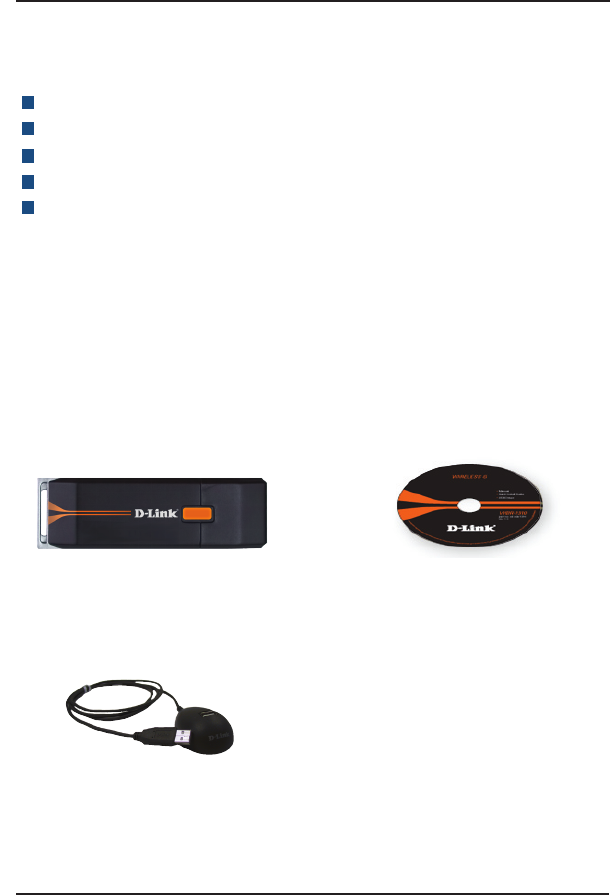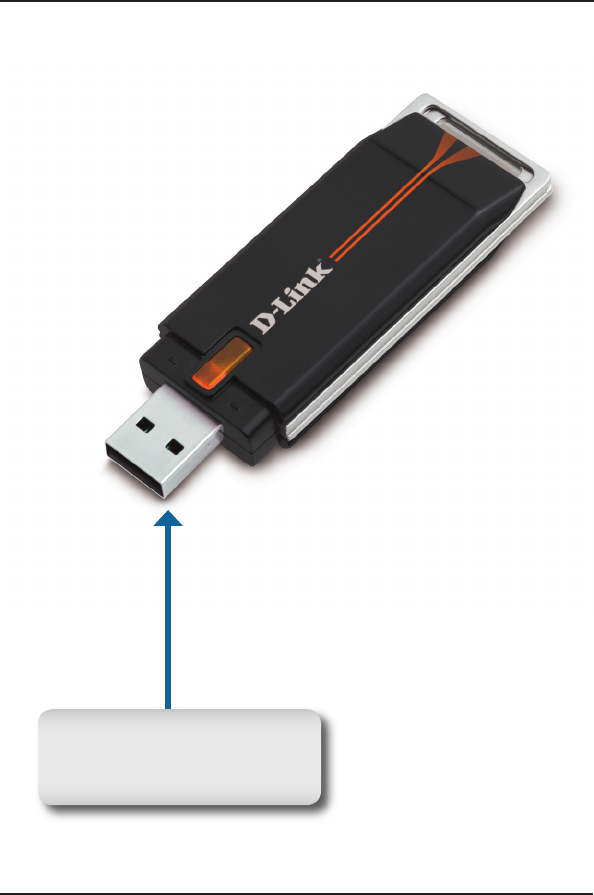D Link WA110A1 Wireless G USB Adapter User Manual part 1
D Link Corporation Wireless G USB Adapter part 1
D Link >
Contents
- 1. user manual part 1
- 2. user manual part 2
- 3. user manual part 3
user manual part 1

Image1.jpg

2D-Link DWA-110 Quick Install Guide
A computer or laptop with an available USB 2.0 port
Windows® 2000 or XP
300MHz processor and at least 64MB of RAM
Properly installed and working USB Controller
An 802.11g or 802.11b access point (for Infrastructure
mode), or another 802.11g or 802.11b wireless adapter (for
Ad-Hoc networking mode.)
Package Contents
System Requirements
If any of the above items are missing, please contact your reseller.
D-Link DWA-110
Wireless G USB 2.0 Adapter
Cradle
Manual, software, and
warranty on CD

3 D-Link DWA-110 Quick Install Guide
Hardware Overview
USB Port
Used to connect the DWA-110 to
your computer.

4D-Link DWA-110 Quick Install Guide
The DWA-110 lets you access your stored data and media les using a
wireless connection from virtually anywhere within the operating range of
your wireless network. Keep in mind, however, that the number, thickness
and location of walls, ceilings, or other objects that the wireless signals
must pass through, may limit the range. Typical ranges vary depending on
the types of materials and background RF (radio frequency) noise in your
home or business. The key to maximizing wireless range is to follow these
basic guidelines:
4
Keep the number of walls and ceilings between the DWA-110 other
network devices to a minimum - each wall or ceiling can reduce your
DWA-110’s range from 3-90 feet (1-30 meters.) Position your devices
so that the number of walls or ceilings is minimized.
1
Be aware of the direct line between network devices. A wall that is 1.5
feet thick (.5 meters), at a 45-degree angle appears to be almost 3 feet (1
meter) thick. At a 2-degree angle it looks over 42 feet (14 meters) thick!
Position devices so that the signal will travel straight through a wall or
ceiling (instead of at an angle) for better reception.
2
3
Keep your product away (at least 3-6 feet or 1-2 meters) from electrical
devices or appliances that generate RF noise.
Building Materials make a difference. A solid metal door or aluminum
studs may have a negative effect on range. Try to position access points,
wireless routers, and computers so that the signal passes through drywall
or open doorways. Materials and objects such as glass, steel, metal,
walls with insulation, water (sh tanks), mirrors, le cabinets, brick, and
concrete will degrade your wireless signal.
If you are using 2.4GHz cordless phones or X-10 (wireless products
such as ceiling fans, lights, and home security systems), your wireless
connection may degrade dramatically or drop completely. Make sure
your 2.4GHz phone base is as far away from your wireless devices as
possible. The base transmits a signal even if the phone in not in use.
5
Wireless Installation Considerations